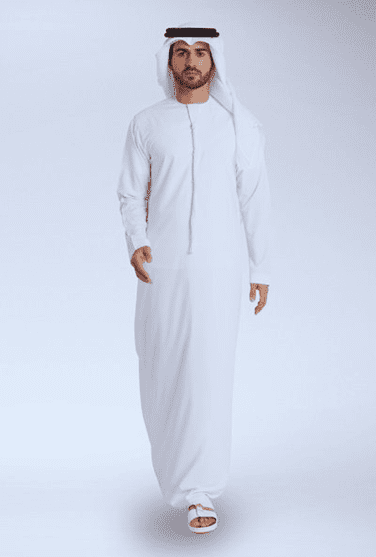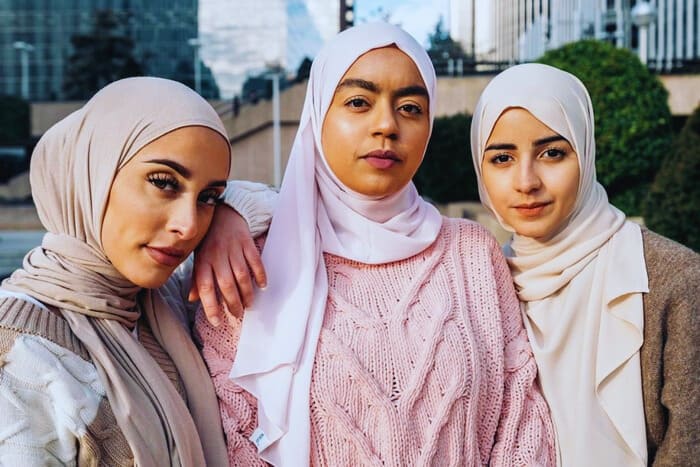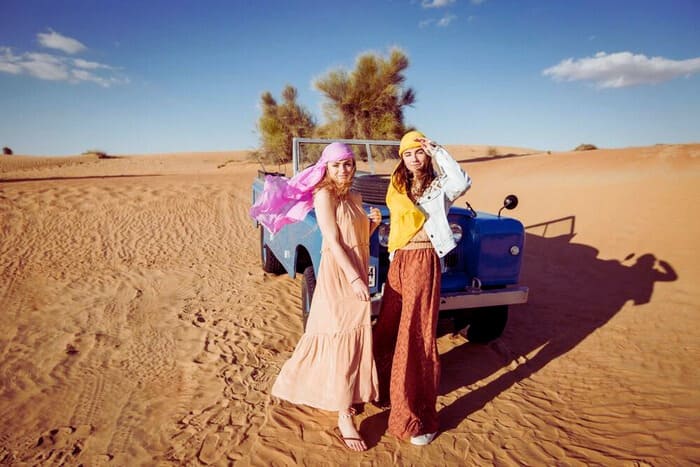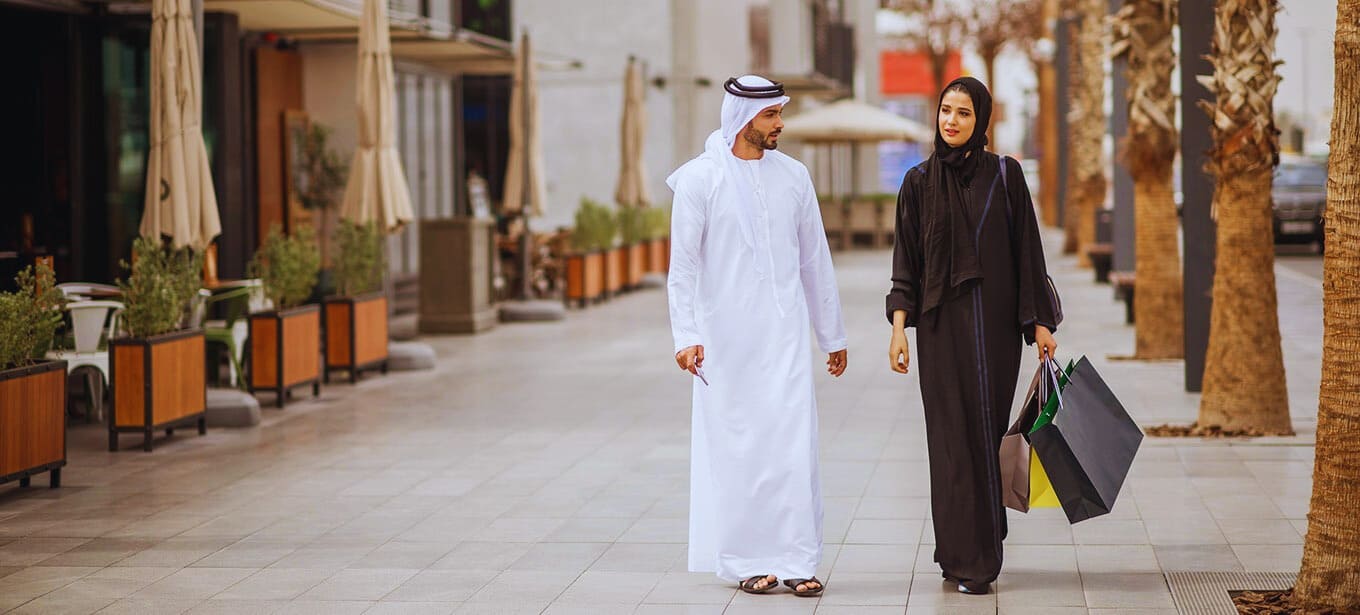Traditional dress of the UAE for Men and Women has always been centered around practicality and comfort, interwoven with the UAE’s customs rooted in Islamic values. In the UAE, where over 75% of the population is Muslim, the Islamic traditional dress code for Muslim men and women is not obligatory for Emiratis, distinguishing them from other Arab states.
The UAE has long been a melting pot of cultures, with more than 200 nationalities now calling it home. As expatriates, we’ve all come to recognize several authentic Emirati traditions. However, the cultural landscape of Dubai has changed over time.
For instance, the harsh desert sun necessitated precaution when it came to covering the skin. Consequently, Bedouins opted for long hemlines and sleeves as a protective measure. Additionally, the local environment favored comfort over wearing fitted clothing. Consequently, both Emirati women and men prefer loose-fitting traditional dresses in UAE culture.
Click here to read about How to make money in Dubai.
Islamic traditional dresses for Muslims in UAE:
Table of Contents
The verifiable hint of the conventional apparel of UAE returns to the Bedouin culture, which won in the Arabic landmass. The Emirati people feel honored and proud of their culture. They always provoked young Emiratis to follow their traditions.
Because as UAE is a diversified hub of all cultures, this might attract young Emiratis. Pleased Emiratis adhere to their customary clothing even today. However, when they travel abroad, they can dress in Western attire.
Here some traditional dresses of the UAE for Men and Women are noted below:
Traditional dress for men in UAE:

-
Traditional dress Kandura:
In Arab countries, traditional history belongs to the tribal and religious. So, the most favored color of Emirati men is primarily white. The difference between the traditional wear of Emiratis from Saudis is that Emirati kanduras have no collar.
Kanduras also known as Thobe, Thawb Dishdasha. Men used to wear long loose tassels and matching embroidery on the sleeves. On average UAE men’s measurements of dress should put on something else up to 50 Kanduras to guarantee that the dress is spotless.
-
The Ghutras and Shemaghs:
The traditional men’s headscarf name is Ghutrah in other Arab countries known as Shemagh or Kufiya. The rectangular cloth and stuff are usually made from cotton.
The equal is the cord that holds it in place and prevents it from blowing around in the wind or falling off. The square piece of headscarf protects the head and face from the extreme heat waves of the desert. Also, they used to cover faces from dust storms.
-
Igal (Agal/Iqal/Egal):
Arab men’s dress head accessory. It is usually black and made from unique materials such as wool, camel hair, etc. It holds great importance in Emirati culture and these people regard it as respect and honor. The wearers used igal to keep ghutrah in place.
-
The Royal Bisht:
The symbol of royalty in Arab is Bisht known as as Mishnah. Primarily, Bisht has been worn over for prestige on special occasions such as Eid, Jummah prayer, Emirati national day, Weddings, or Festivals.
Bisht fine coats are made in dark colors like black, brown, cream, beige, or grey. Usually, the Bisht has long sleeves, but short or elbow-length sleeves are also possible. Note that the underlying dress is always long-sleeved: only Arab men wear kanduras, short-sleeved thobes, at home.
-
Traditional Footwear:
No dress code completes without footwear. The traditional shoe for Emirati men is called Na-aal, a sandal worn without socks. However, Dubai is an exception in this case, as its residents wear shoes more often. The shoes had to be removed five times a day during prayer so that they could be easily put on and taken off. Weather conditions also played an important role in their design. Arabic sandals have an open toe because wearing socks and closed shoes is not comfortable in hot and humid climates.
Women’s traditional dress in UAE:

-
Abaya:
Abaya is worn over everyday attire for modesty. Muslim women wear an abaya to cover the whole body except feet, hands, face, and hands. Most women avoid revealing underneath and wear light-colored clothes or any other choice of Western wear (jeans) as well. Whenever a woman wants to go outside the home she quickly just covers over and safely goes out.
-
Headscarves:
The headscarves, also traditionally called Shayla. Women’s headwear is a piece of cloth that covers the hair. Modern women’s headscarves are popular to wear quite loose hijab to show the few front hairs.
-
Cultural Women’s attire accessories:
To cover the eyes and face, you can also find a geisha as an option. In addition, women from the United Arab Emirates like to wear jewelry such as rings, bracelets, and earrings. All of this is an integral part of their traditional costumes. Although modesty is the primary goal of every Emirati woman, they still use makeup like kajal to emphasize their physical qualities. Henna is also a source of cultural wealth and is intricately applied to the feet and hands.
Click here to read about the: Traditional Sports in UAE
Traditional Clothing Rules for UAE Visitors:

Dubai is notorious for its rich culture, modern architecture, and glamorous lifestyle and your attire should reflect these aspects. When visiting the UAE, visitors need to adhere to traditional clothing norms.
Modest attire that covers shoulders, arms, and knees is expected, showcasing respect for local culture. For men, a long shirt and pants are suitable, while women should opt for loose-fitting clothing and consider wearing a headscarf.
Compared to all Muslim countries UAE is conservative, for tourists there is no strict dress code to follow. Advice for tourists to respect the tradition and customs and always wear sensible and decent dresses, but wearing clothes that cover your shoulders and knees is compulsory.
Royal people dress to wear for special occasions and celebrations
During celebrations and in the presence of esteemed individuals, Emirati men may also don the Bisht, a dark-colored cloak worn over the kandura. Traditional Muslim men and women in the UAE exude elegance and cultural pride through their celebration dress codes on special occasions. For men, the attire often includes the dashing Kandura, a flowing white robe paired with a headpiece called a Ghutra or Shemagh, held in place by an Agal. This ensemble reflects the region’s desert heritage while radiating a sense of dignity.
On the other hand, women don the striking Abaya, a flowing black cloak, which symbolizes modesty and grace. It is often embellished with intricate designs and paired with a matching headscarf, or Hijab, creating an enchanting aura of tradition and refinement.
Conclusion:
The traditional dress of the UAE for men and women stands as a proud symbol of heritage and identity in the UAE’s vibrant cultural landscape. Kanduras and Abayas, intricately adorned with details and symbolism, honor one’s roots while embracing modernity. Dress codes in the UAE are a harmonious combination of cultural heritage, practicality, and religious admiration, uniting tradition with modern sensibilities, and creating a sense of belonging and elegance on every special occasion. The choice of attire symbolizes the nation’s embrace of multiculturalism and the evolving character of contemporary Emirati life as the nation embraces its multicultural identity.

